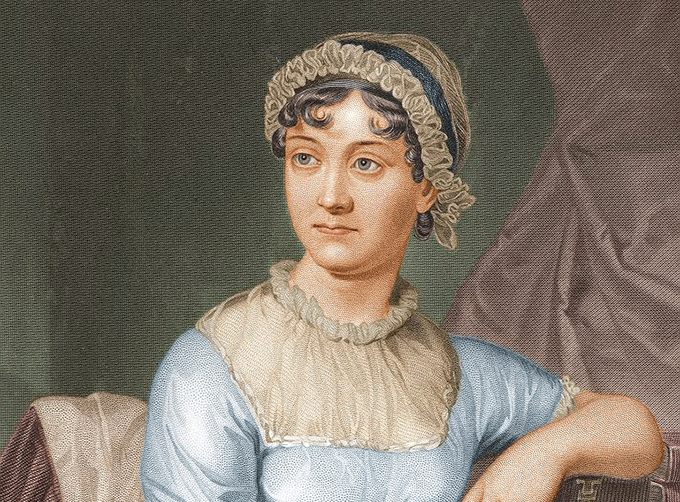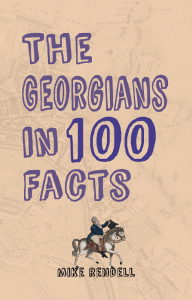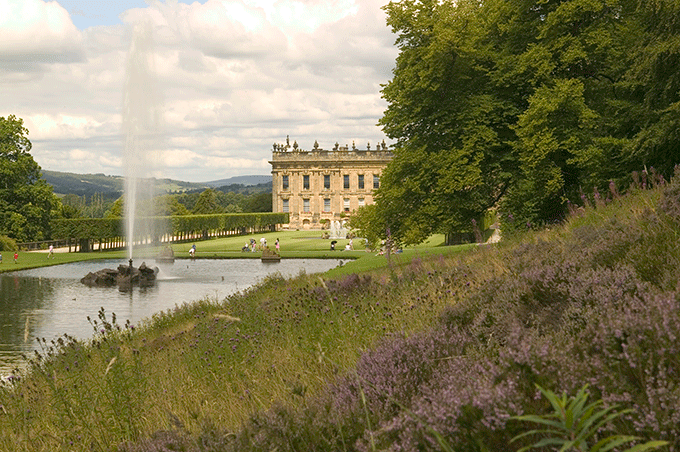Think you know the Georgians? Check out these weird and wonderful facts about the people who lived during an age of great social and political change, from Mike Rendell’s book, The Georgians in 100 Facts.

The Georgian era is known for its lavish fashions and sumptuous food, as well as being a time of great social and political change. It saw the birth of the Industrial Revolution, the abolition of the slave trade and the expansion of the British Empire.
It was also the age of some of the most colourful and creative characters in British history, from Shelley and Wordsworth to the mad King George III and Capability Brown.
 Mike Rendell’s new book The Georgians in 100 Facts covers some weird and wonderful facts about the era, as well as debunking myths. Here’s a taste of what’s on offer.
Mike Rendell’s new book The Georgians in 100 Facts covers some weird and wonderful facts about the era, as well as debunking myths. Here’s a taste of what’s on offer.
George III may not have been mad to start with, but he was by the end
It has been fashionable to explain the various bouts of illness that affected George III throughout his reign as being caused by porphyria. Certainly, one of the symptoms of porphyria can be blue urine, apparently noted by the king’s doctors, but others argue that the discoloration was caused by his medicinal use of gentian root. Nowadays, he would probably be diagnosed as suffering from bipolar disorder.
Whatever the cause, the fact remains that the behaviour of the king was at times extremely erratic. Contemporaries speak of his excessive loquacity, which would lead to him literally frothing at the mouth. He would scribble long sentences, only occasionally bothering to use a verb, and spend hours designing enormous palaces, filled with dramatic staircases by largely devoid of windows.
‘Capability’ Brown destroyed more gardens than anyone else before or since
Capability Brown died on 6 February 1783, in London, leaving behind a legacy unparalleled in the history of English gardening. Indeed, one of the criticisms made against Brown was that he had destroyed so much of what had gone before. The architect Sir William Chambers complained that Brown’s grounds ‘differ very little from common fields, so closely is nature copied in most of them’.
His works destroyed the three greatest Baroque gardens in England: Longleat House in 1757 and Chatsworth and Blenheim in 1760. In its place he brought a parkland style which became so popular that there can hardly be a stately home in the country which doesn’t show Brown’s influence to some degree.
Jane Austen remained anonymous throughout her lifetime
It is a truth universally acknowledged that although Jane Austen published four novels during her lifetime they were all published anonymously. Each book was described as having been written ‘by a lady’. While she was alive she received a certain amount of critical acclaim, from writers such as Sir Walter Scott, but derived very little financial return from her writings, and certainly not enough to lift her from a life of considerable straightened circumstances. Jane, like most of her heroines, was faced with the unenviable choice of remaining single and poor, or marrying and losing all independence. Unlike her heroines, who generally waited until love prevailed and all parties got their dues, Jane turned her back on the one proposal of marriage she did receive and paid the price by never getting to live happily ever after.
Related articles10 of the greatest Queens of England |
Click here to subscribe! |
Download BRITAIN Magazine to your mobile today

 No mobile device? Purchase directly on Zinio for your desktop!
No mobile device? Purchase directly on Zinio for your desktop!






 © 2024
© 2024